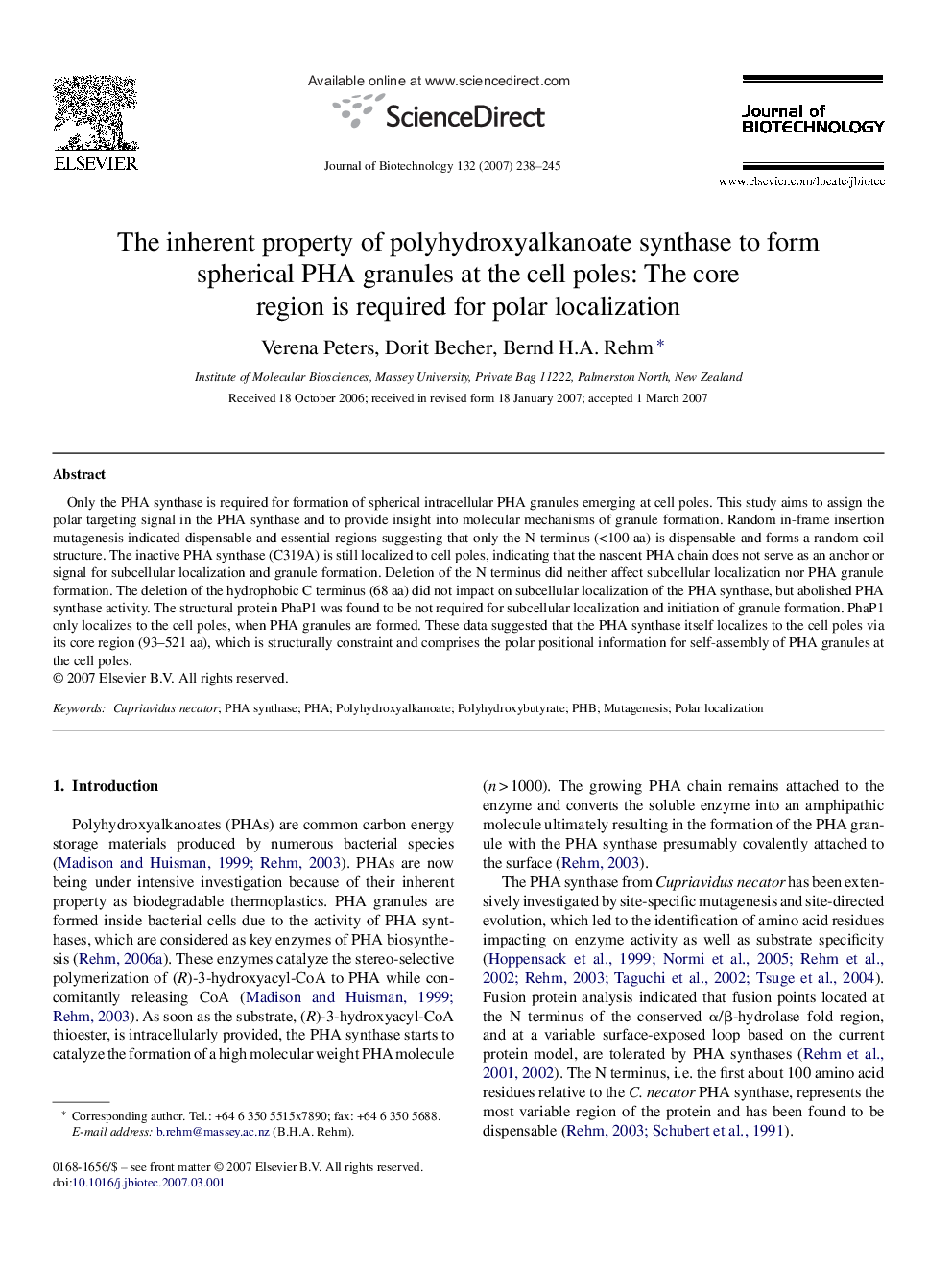| Article ID | Journal | Published Year | Pages | File Type |
|---|---|---|---|---|
| 24894 | Journal of Biotechnology | 2007 | 8 Pages |
Only the PHA synthase is required for formation of spherical intracellular PHA granules emerging at cell poles. This study aims to assign the polar targeting signal in the PHA synthase and to provide insight into molecular mechanisms of granule formation. Random in-frame insertion mutagenesis indicated dispensable and essential regions suggesting that only the N terminus (<100 aa) is dispensable and forms a random coil structure. The inactive PHA synthase (C319A) is still localized to cell poles, indicating that the nascent PHA chain does not serve as an anchor or signal for subcellular localization and granule formation. Deletion of the N terminus did neither affect subcellular localization nor PHA granule formation. The deletion of the hydrophobic C terminus (68 aa) did not impact on subcellular localization of the PHA synthase, but abolished PHA synthase activity. The structural protein PhaP1 was found to be not required for subcellular localization and initiation of granule formation. PhaP1 only localizes to the cell poles, when PHA granules are formed. These data suggested that the PHA synthase itself localizes to the cell poles via its core region (93–521 aa), which is structurally constraint and comprises the polar positional information for self-assembly of PHA granules at the cell poles.
